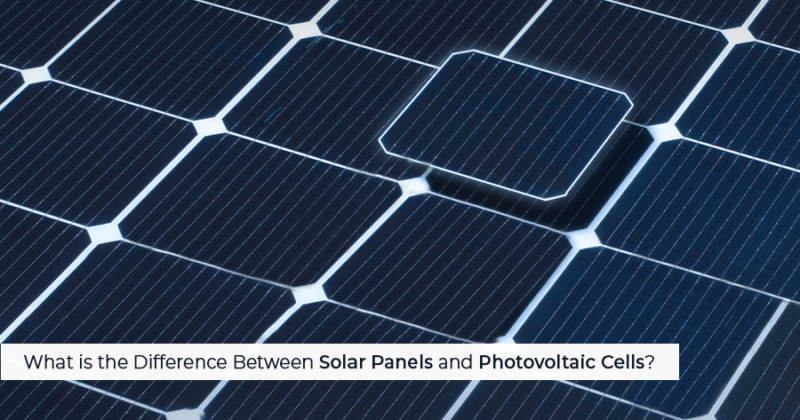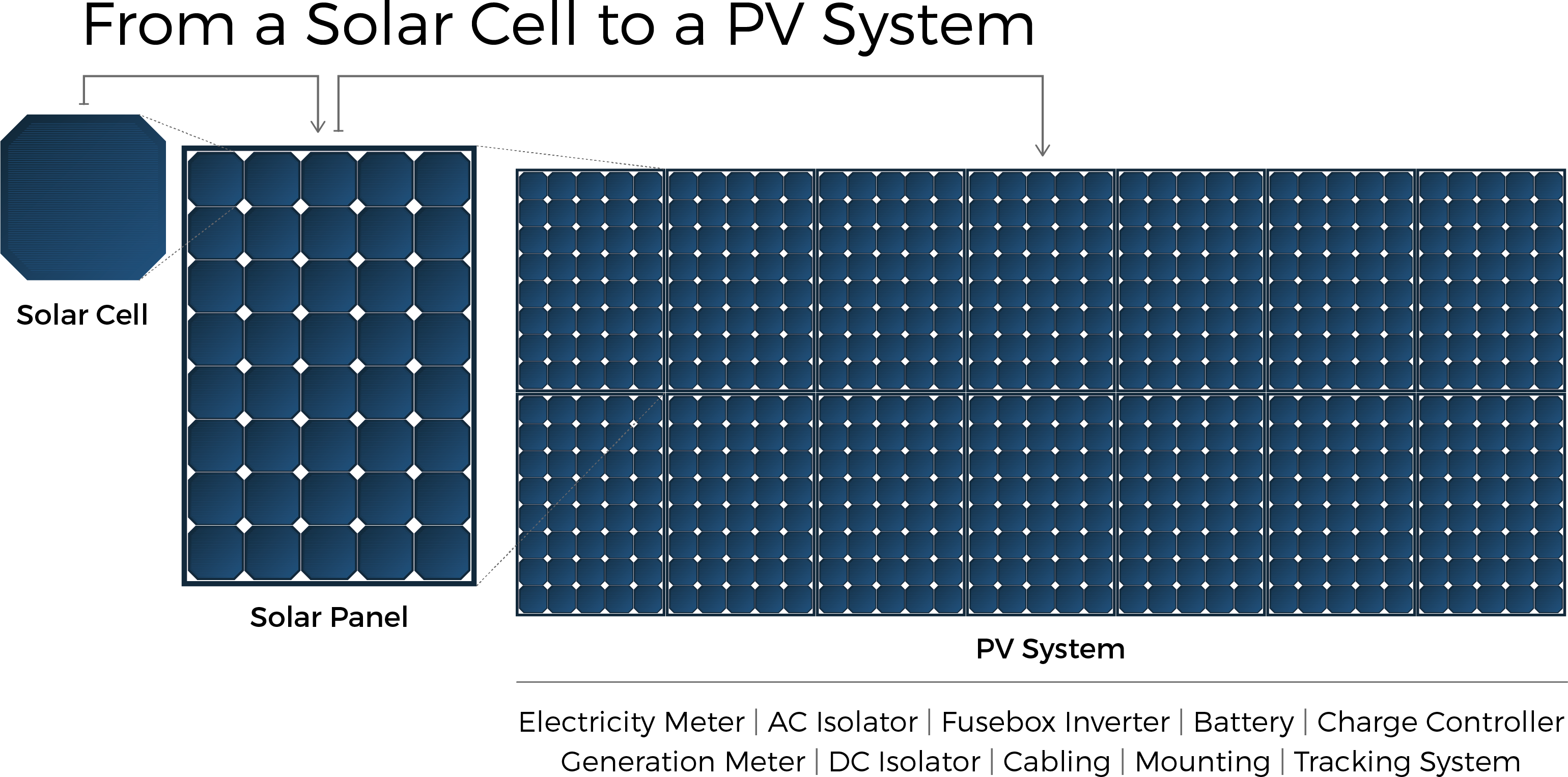What is the Difference Between Solar Panels and Photovoltaic Cells?

Are you confused about the difference between solar panels and photovoltaic cells? Despite being often used interchangeably, solar panels and cells are two very different parts of your solar PV system. To find out the difference between the two, and how to use the terms correctly, read on.
The Role of Photovoltaic Cells
To begin, we’ll first examine the role of photovoltaic cells in your solar PV system. Your solar cells produce electricity via the photovoltaic effect, where sunlight creates electricity in certain materials by knocking their outer electrons loose.
Without getting too technical, photovoltaic cells can be made from either monocrystalline or polycrystalline material, and consist of several layers, the most important of which are the two semiconductors in the centre. The top semiconductor is a negative layer, as the material’s atoms contain extra electrons, which carry a negative charge. In contrast, the bottom semiconductor is a positive layer, as the material’s atoms have missing electrons.
When sunlight hits the top semiconductor, the loose electrons become excited, are knocked loose, and then attracted to the positive layer beneath. A barrier between the two layers is formed, as conductors on both layers force the electrons to travel around the cell, creating an electric current.
The conductors then force this current out of the cell and into an electrical load, which captures the energy your photovoltaic cell has produced. The electrons eventually re-enter the cell, and the process repeats.
The Role of Solar Panels
Because photovoltaic cells only generate a limited amount of energy, numerous cells are connected to create a solar panel. Working together, multiple solar cells generate higher currents and therefore more energy.
In addition, by sealing multiple cells together, your panel acts as a protective case for the cells to exist in. This means your solar cells are less susceptible to damage by external factors, including severe weather such as hail*.
The DC electricity generated by your solar panels is then directed to your central inverter (or micro inverter, depending on your system set up), where it is converted into AC electricity your home and appliances can use.
The number of cells in your panel will depend on the specific brand and size you choose, although 60 and 72 cells in a single panel are common.
Another term you may have come across, a photovoltaic array, is simply used to describe a system that is composed of multiple PV panels.
The Photovoltaic System as a Whole
As you can see, photovoltaic cells and panels are both integral, closely connected parts of your solar PV system. Photovoltaic cells are the main component that makes up a solar panel, while solar panels are a vital component that makes up a solar system.
While a single photovoltaic cell is able to convert sunlight into electricity on its own, the panel is essential to combine and direct the energy output of numerous cells to your inverter and home.

For more information on quality solar panels, or for a customised solar quote for your home, contact us on 1300 074 669, or click here to request a no obligation callback.
*This is one of the many reasons it’s so important to invest in a good quality solar panel. If substandard plastic is used, or if the manufacturing process is done by poor quality machines or by hand, a process called delamination can occur. This means the bond between the plastic and glass detaches, allowing moisture and air to enter the panel, causing corrosion and inevitably, complete failure.


